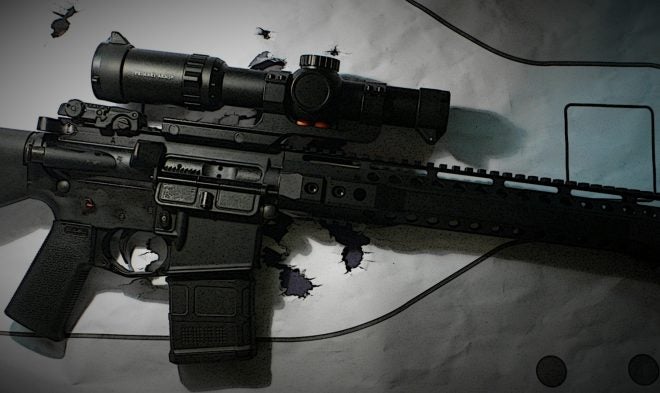TFB’s First Firearm Series is dedicated to those that haven’t yet taken the plunge into firearm ownership, or for the particular firearm at hand. So, if you’re looking at getting your first AR15, I hope we can ease any confusion you may have. The current market for the AR15 pattern rifle has heavy aftermarket support and affordable price ranges on rifles and accessories alike.
TIME TESTED AND BATTLE PROVEN
I’ll admit that for quite some time after I became interested in firearms, I shied away from the AR15. At the time, I figured I could buy other semi-auto rifles for less and I didn’t feel like “going with the flow.” However, when I wasn’t satisfied with the options I’d chosen, “better” non-AR’s were a lot more expensive and didn’t really offer much more performance or features than an AR15. I finally realized that I wouldn’t find the aftermarket support, tried and true history, and customization ability in another platform for the price I was able to spend.
The AR15 has been commercially available for over 50 years and the military versions have seen active service as primary weapons for soldiers, sailors and marines for just as long. This isn’t quite the right spot to cover all of the history of the AR pattern rifles, other than to say there has been over a half-century of feedback from combat veterans and civilian shooters that have gone into the product you may be considering buying today as your first AR15.
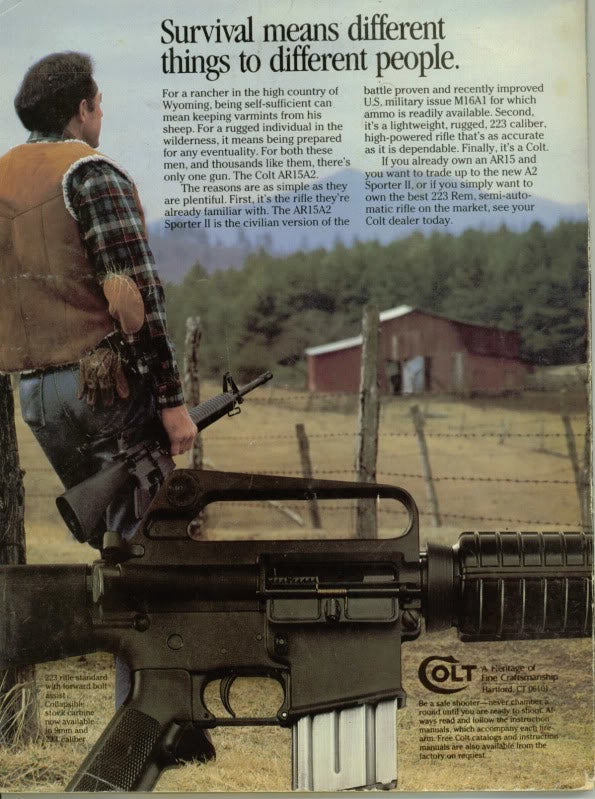
Colt advertisement from the 1980s. Image from survivalistboards.com
A SHORT GLOSSARY
There are two major components to AR15 style rifles; the UPPER receiver and the LOWER receiver. Feel free to click the links below to see a sample of some of the different options offered for each part. The links also represent a smattering of well-known retailers that stock all sorts of AR15 parts.
In the US, the Lower receiver is the part that is deemed the “firearm”. It contains the trigger group, the magazine well, pistol grip, buttstock, buffer, buffer tube and buffer spring. If you buy a “stripped” (with no parts in it) or complete Lower at a gun store, plan on filling out the 4473 form and having a NICS background check done before you’re able to take it home. If you buy online, you’ll need to have it shipped to a Federal Firearms License dealer in your state to complete the 4473 and the background check. Check your local laws for face-to-face transactions.
The Upper receiver retains the barrel, gas tube, handguards, bolt, bolt carrier group (commonly referred to as BCG), charging handle and a forward assist button on most models. Federally, the Upper is not considered a firearm, and can currently be shipped to your house in the US.
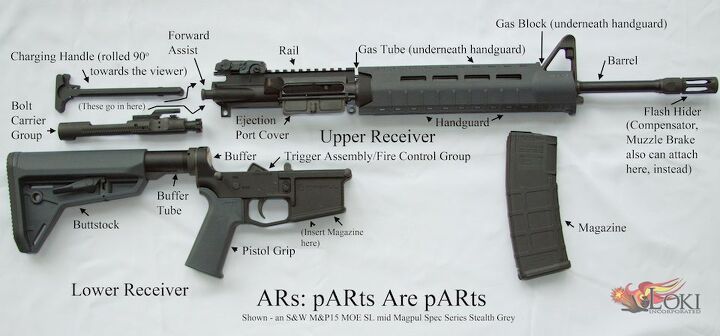
Photo by Jason Baird. Image from womensoutdoornews.com
The following video is a great animation from Thomas Schwenke’s YouTube channel. It shows how the AR15 functions in great detail and is easy to understand.
BUYING VS. BUILDING
One choice you get to make up front is whether you want to buy a complete rifle, or build it the way you want from the start. As we just covered Uppers and Lowers, I should also mention that you can decide to buy a complete Upper and build your own Lower from parts kits, or vice versa. Because the AR15 has been around so long and has become so common, parts kits and stripped receivers are available at local gun shops and online.
For my first AR15, I chose to build the Lower at home so I could start with the pistol grip and butt stock that I wanted. I like working with my hands and it was a fun project. I also got a better chance to learn the inner workings by putting them in myself. Ar15.com has a very handy how-to guide with pictures.
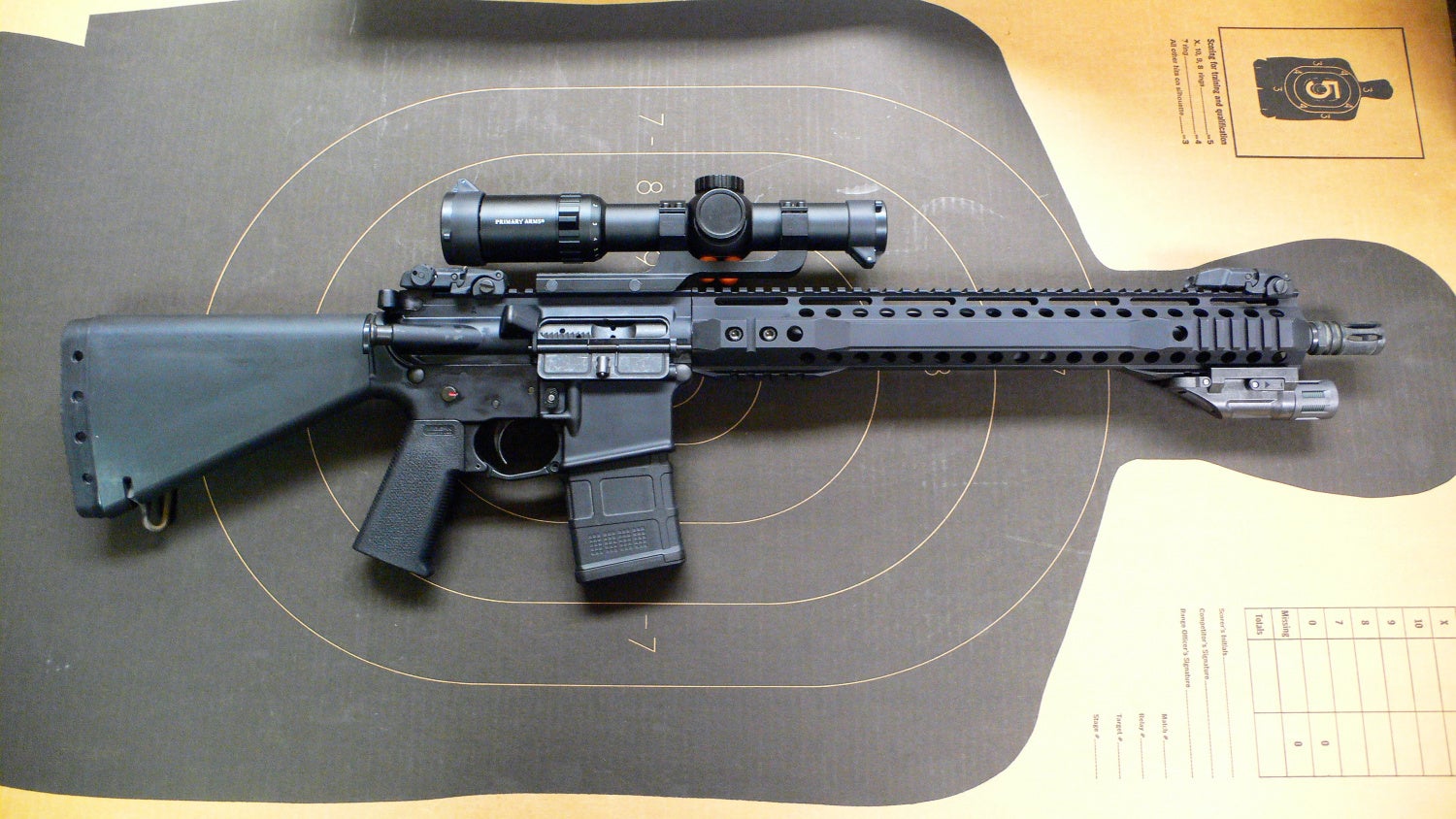
Author’s first AR15. Built with desired parts to save money by not having to swap them later. Ear plugs are kept handy between the scope and mount.
PRICE
This is probably the best possible time to talk prices on your first AR15. Because it’s become so commonplace, and many companies compete for sales, AR15’s can be had for as little as $450. This is great news if you don’t have much to spend on your first AR. There is a possibility that the lowest price rifle won’t have all the bells and whistles, or be as finely tuned as one that cost twice as much. However, an internet search will more than likely yield easy solutions if it has any hiccups.
If you can afford to spend more, you’ll likely have a better quality rifle overall. Some AR models can cost up to $2,500 or more, although you really don’t have to spend that much to get an accurate and reliable rifle.
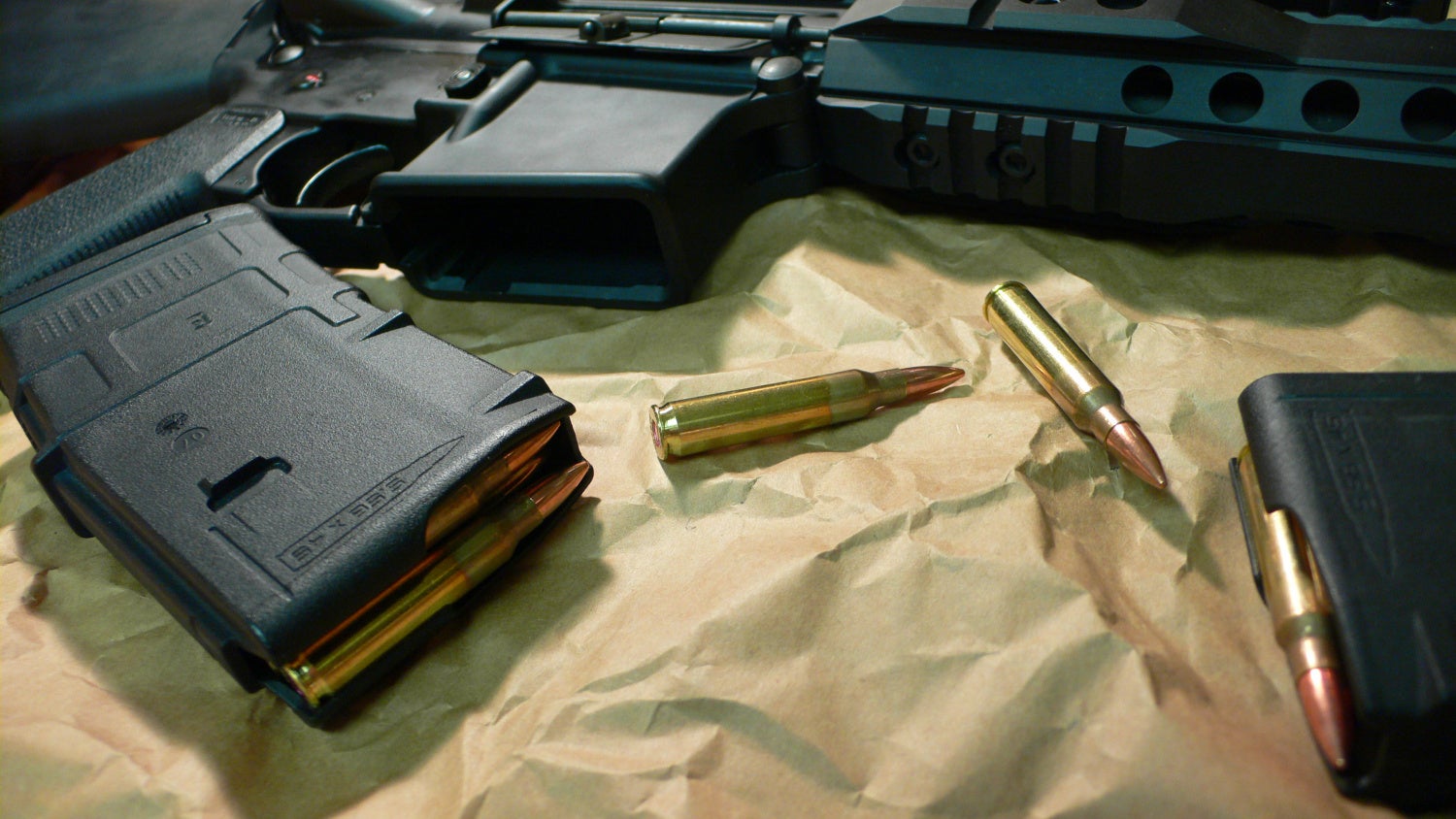
CALIBER OPTIONS
Caliber choices abound these days when it comes to the AR15. There are some safety caveats when it comes to choosing what you’ll feed your rifle, so make sure you learn what you can safely use in your gun. When in doubt, look it up, or stick to the caliber specifically stamped on your rifle’s barrel.
With the barrel fastened to the Upper receiver, switching to a different caliber can be as easy as pulling out the two retention pins on the Lower to remove the Upper, then simply replace the Upper with another one of a different caliber. Or, if you want to start with something other than the traditional 5.56×45 NATO, there are manufacturers that sell complete rifles already chambered for the caliber you desire.
The typical AR15 pattern rifle size can be made to accommodate calibers such as 5.56 NATO, .300 BLK, 7.62×39 Russian, 6.5 Grendel, 6.8 SPC, .450 Bushmaster, or can even be converted to shoot pistol caliber cartridges. For larger cartridges such as 7.62×51 NATO and 6.5 Creedmoor, the Upper and Lower receivers need to be bigger. The bigger variant is commonly referred to as an AR10, however, there are several different patterns that we’ll not dive into here. For your first AR though, it’s probably best to pick one caliber and familiarize yourself with the rifle’s operation and become efficient with it.
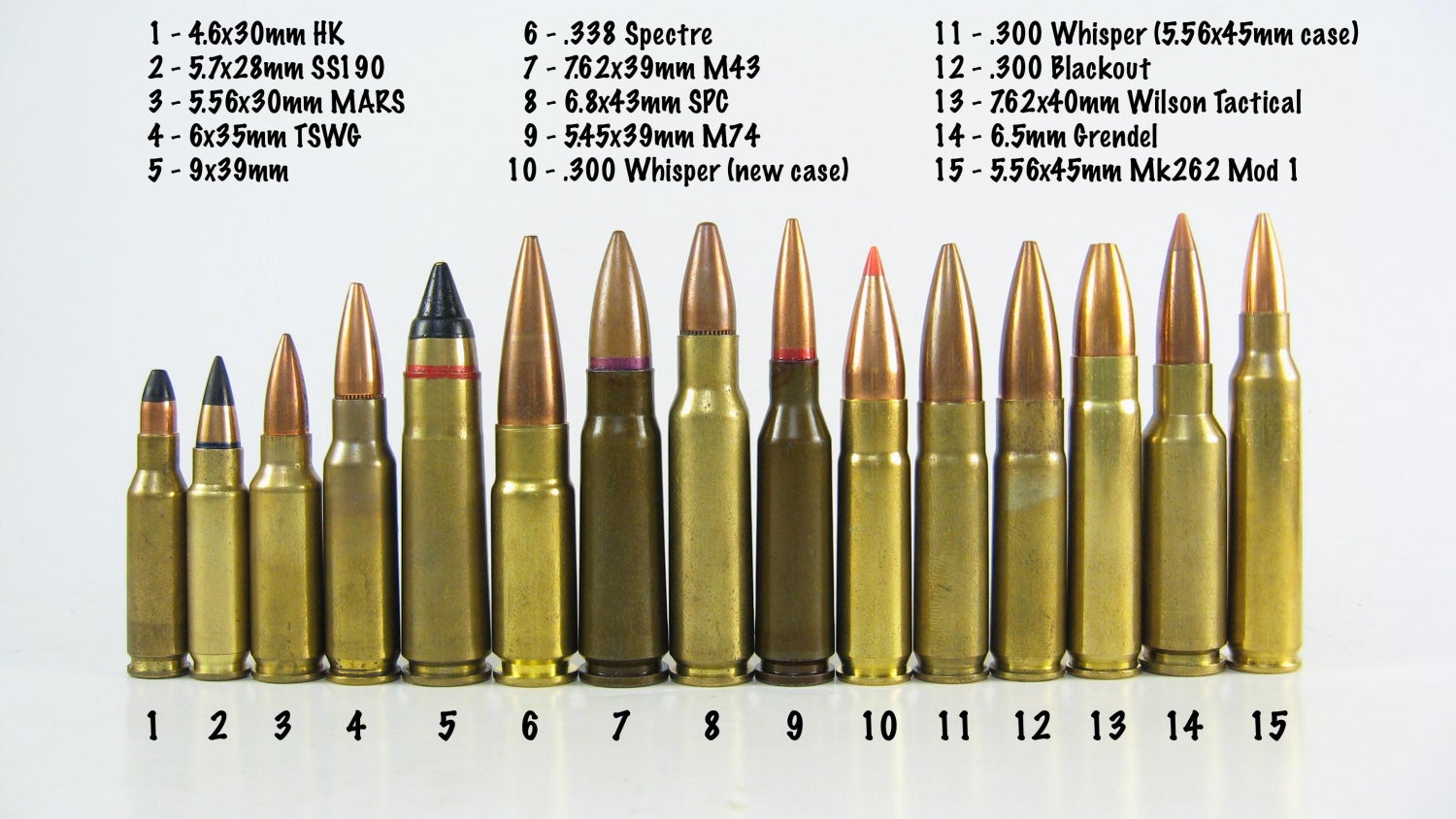
Image from msgo.com. A discussion about “oddball” AR calibers. 5.56×45 is a good place to start, but there are other options.
ACCESSORIES
The modularity of the AR over the last couple of decades has provided some interesting accessories, some helpful, some not. If the AR15 is to be your first rifle, I recommend starting with just iron sights. Get to know the rifle and how it shoots and become accurate with the bare fundamentals of trigger control, sight picture and breathing. Once you’ve become comfortable with your ability, then add whatever you want. I prefer to keep my rifles as simple as possible, adding only a weapon light, variable power optic and a sling, but that comes down to preference. Other common accessories include lasers, vertical foregrips and bipods. Click on the links in this paragraph to see available options for each accessory.
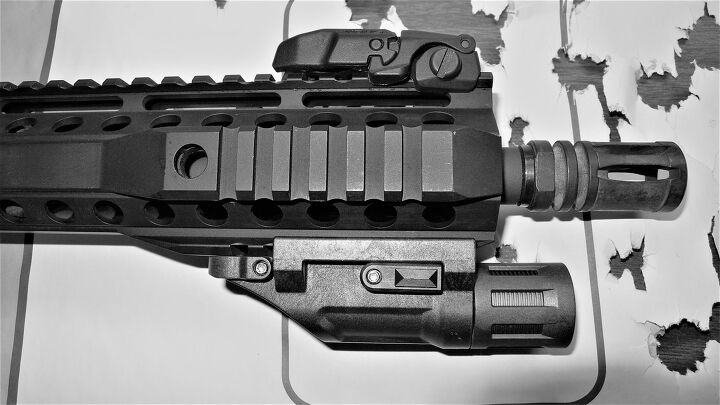
Author’s Inforce WML (weapon mounted light). There are plenty of options for other lights as well.
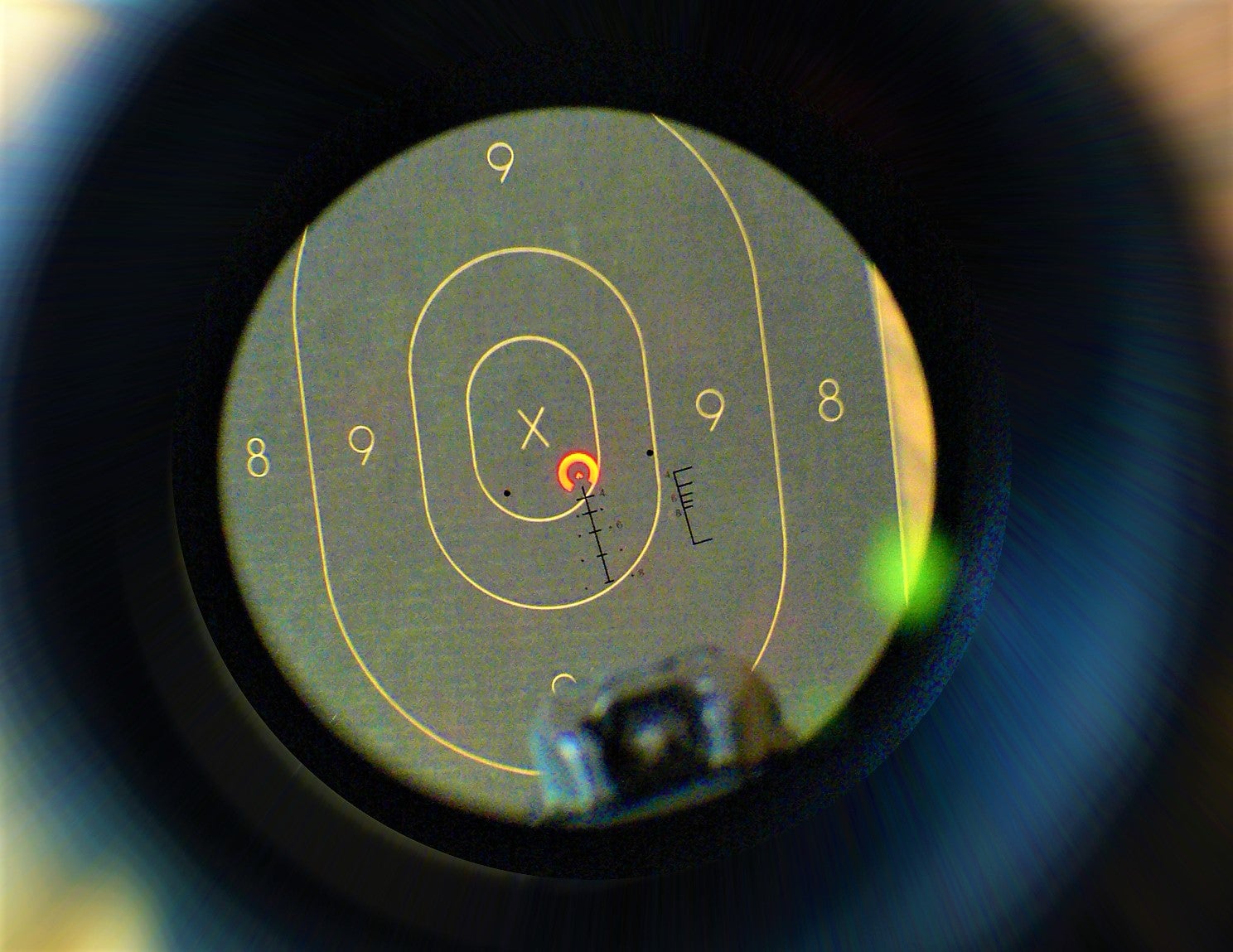
Red Dot Sights (RDS) and rifle scopes can aid in quicker target acquisition and aiming, but working on fundamentals with iron sights is a good start.
TFB STAFF BRAND RECOMMENDATIONS
Pete: “Factory first I think. Any of the “top tier” brands. Maybe take a look at Adam’s Ar15 readers choice article from last month.”
Nicolas C. “For a first time build AR I would highly recommend the Larue Ultimate Upper Kit. It is an entire Larue Rifle. You just add a lower receiver. And it costs like $800.”
Matt E. “Honestly the Tread isn’t a bad value or PWS new Pro line has some value being a long stroke piston gun that cheap.”
Nathaniel F. “It’s worth noting that I went ~9,000 rounds on a Colt 6920 over 7 years without feeling the need to upgrade it. People probably put too much emphasis on rails. Most people don’t shoot in a manner where rails would benefit them much, and most rails are suitable for use by 90% of the people who actually do need them because they are shooting in various positions. So, if buying off the shelf and budget minded, I probably wouldn’t worry about getting a rail the first time around unless it was a good deal on an otherwise quality gun.”
Rusty S. “A few factory AR recommendations (I’ll keep to 5.56 for simplicity’s sake): POF-USA Renegade+, Ruger AR-556 MPR, PWS. For those who wish to build one of their own: don’t hesitate to do so. You can save a lot of money, learn a lot, and have a rifle configured exactly the way you want.”
The linked list of AR15 models below is not exhaustive but shows a range of products with varying price points (which are subject to change) and features. They can give you an idea of what’s out there or perhaps you’ll see the one you want for your first AR15.
$450-900
PSA Freedom, S&W M&P Sport II, Ruger AR556, Ruger AR556 MPR
$900-1400
Springfield Armory Saint, Sig Sauer Tread, Fight Lite SCR, Savage MSR 15, CMMG Endeavor 200, LMT SPM 16
$1400+
Savage MSR Valkyrie, LWRC IC Enhanced
How many of you are looking for your first AR15? Do you think you’d like to build one or buy a complete AR to begin with? Is there a caliber other than 5.56 that’s caught your attention? To our experienced readers, what brand would you recommend in each price category? How many of you built your first AR15?
We are committed to finding, researching, and recommending the best products. We earn commissions from purchases you make using the retail links in our product reviews. Learn more about how this works.
 Your Privacy Choices
Your Privacy Choices
